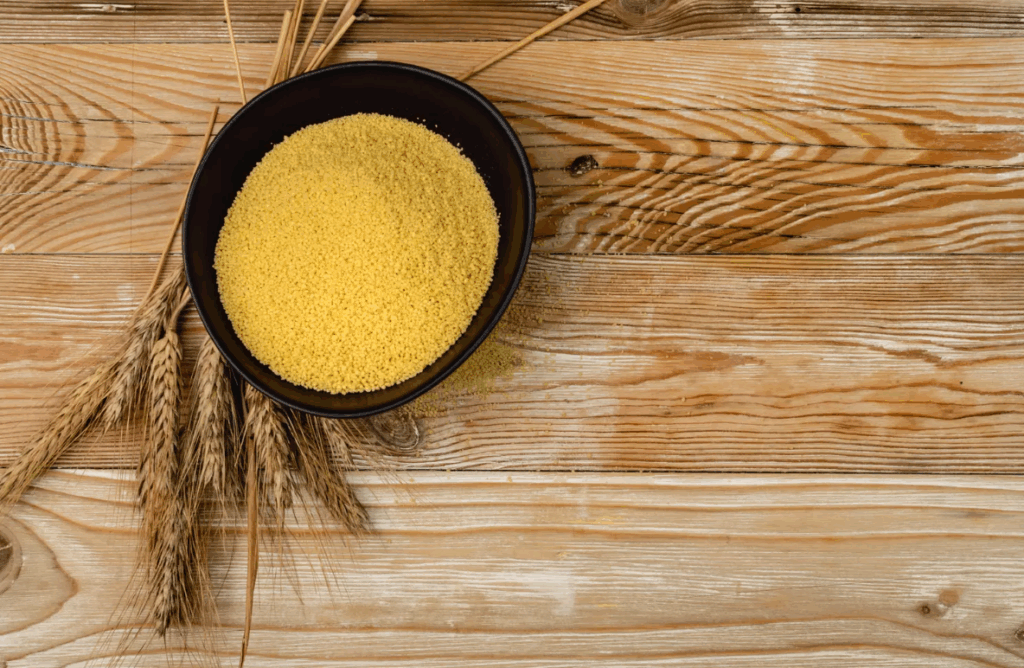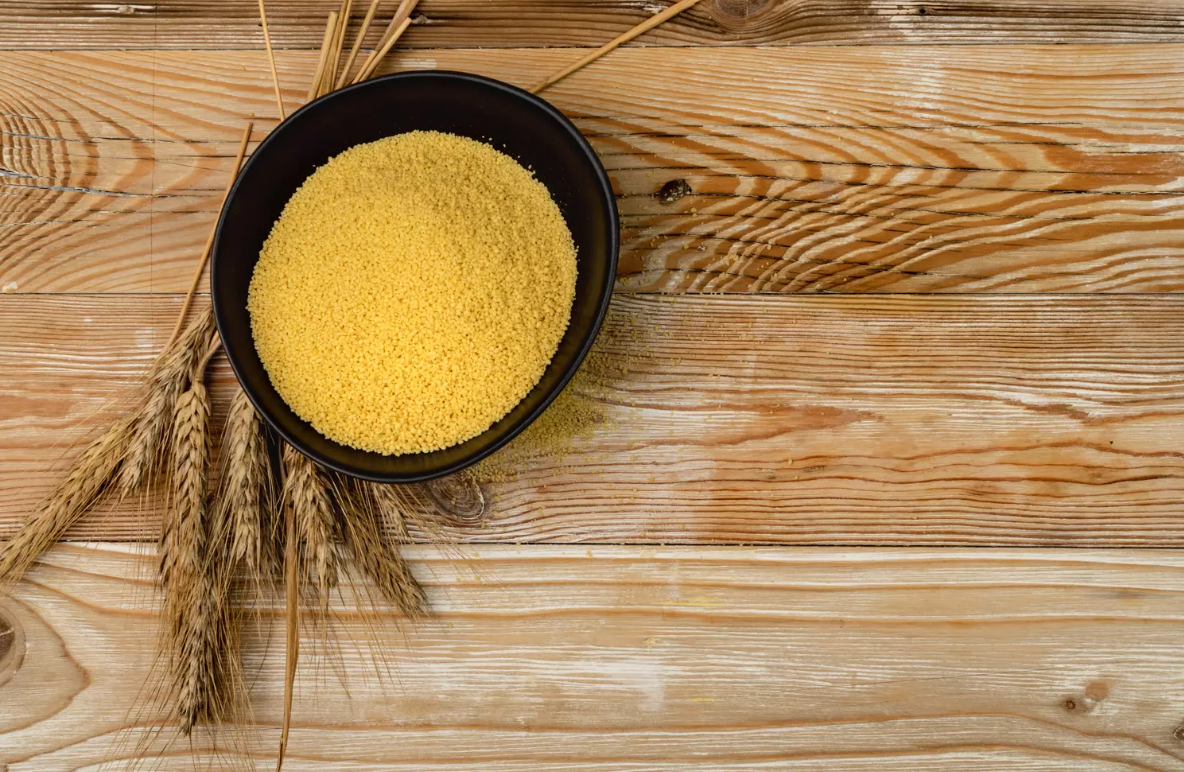
Durum Wheat Semolina: A Comprehensive Guide
Durum wheat semolina, a coarse, purified wheat middlings of durum wheat, is a staple ingredient in various cuisines around the world. Known for its golden color and nutty flavor, durum wheat semolina is particularly popular in pasta making, couscous production, and various baked goods. This article delves into the fascinating world of durum wheat semolina, exploring its origins, nutritional profile, culinary applications, and potential health benefits.
What is Durum Wheat Semolina?
Durum wheat semolina is derived from durum wheat (Triticum durum), a tetraploid species of wheat. Unlike common wheat (Triticum aestivum), durum wheat is harder and has a higher protein content, making it ideal for producing pasta that holds its shape during cooking. The milling process separates the endosperm of the durum wheat kernel, which is then ground into coarse particles known as semolina. This contrasts with flour, which is ground to a much finer consistency.
The Milling Process
The production of durum wheat semolina involves several steps. First, the durum wheat grains are cleaned to remove any impurities. Then, they undergo a series of grinding and sifting processes to separate the endosperm from the bran and germ. The endosperm is then ground into semolina, with different grades available based on particle size and purity. High-quality durum wheat semolina is characterized by its uniform golden color and minimal bran contamination.
Nutritional Profile of Durum Wheat Semolina
Durum wheat semolina is a nutritious grain product, providing a good source of energy, protein, and dietary fiber. It is also rich in several vitamins and minerals, contributing to overall health and well-being. Here’s a closer look at its nutritional composition:
- Carbohydrates: Primarily complex carbohydrates, providing a sustained release of energy.
- Protein: Contains a significant amount of protein, essential for muscle building and repair.
- Fiber: A good source of dietary fiber, promoting digestive health and helping to regulate blood sugar levels.
- Vitamins: Rich in B vitamins, including folate, thiamin, and niacin, which play vital roles in energy metabolism and nerve function.
- Minerals: Contains iron, magnesium, phosphorus, and zinc, essential for various bodily functions.
Compared to refined wheat flour, durum wheat semolina generally has a lower glycemic index (GI), meaning it causes a slower and more gradual rise in blood sugar levels. This makes it a healthier option for individuals with diabetes or those looking to manage their blood sugar levels.
Culinary Applications of Durum Wheat Semolina
Durum wheat semolina is incredibly versatile and used in a wide range of culinary applications across different cultures. Its unique texture and flavor make it a preferred ingredient in many traditional dishes.
Pasta Making
The most well-known use of durum wheat semolina is in pasta making. Its high protein content and gluten strength allow pasta to maintain its shape and texture during cooking. Semolina pasta is typically firmer and more al dente compared to pasta made from other types of flour. From spaghetti and penne to ravioli and lasagna, durum wheat semolina is the foundation for countless pasta dishes.
Couscous Production
Couscous, a staple in North African cuisine, is made from steamed durum wheat semolina. The semolina is moistened, rolled into small granules, and then steamed until fluffy. Couscous is often served with stews, vegetables, and meats, providing a hearty and nutritious meal.
Baking and Desserts
Durum wheat semolina is also used in baking, adding a unique texture and flavor to breads, cakes, and other desserts. In some cultures, it is used to make semolina pudding, a creamy and comforting dessert. Its slightly coarse texture can add a pleasant chewiness to baked goods.
Other Uses
Beyond pasta, couscous, and baking, durum wheat semolina is used in various other culinary applications. It can be used as a coating for fried foods, adding a crispy texture. It is also used in some types of porridge and cereals, providing a nutritious and filling breakfast option.
Health Benefits of Durum Wheat Semolina
Incorporating durum wheat semolina into your diet can offer several health benefits, thanks to its nutritional composition.
Improved Digestive Health
The dietary fiber in durum wheat semolina promotes healthy digestion by adding bulk to the stool and facilitating regular bowel movements. Fiber can also help prevent constipation and reduce the risk of colon cancer.
Sustained Energy Release
The complex carbohydrates in durum wheat semolina provide a sustained release of energy, preventing sudden spikes and crashes in blood sugar levels. This can help improve energy levels and reduce cravings for sugary foods.
Muscle Building and Repair
The protein in durum wheat semolina is essential for muscle building and repair. Protein is also important for maintaining healthy tissues and supporting various bodily functions.
Rich in Essential Nutrients
Durum wheat semolina is a good source of essential vitamins and minerals, including B vitamins, iron, magnesium, phosphorus, and zinc. These nutrients play vital roles in energy metabolism, nerve function, bone health, and immune function.
Potential Downsides and Considerations
While durum wheat semolina offers several benefits, there are also some potential downsides to consider.
Gluten Content
Durum wheat semolina contains gluten, a protein that can cause adverse reactions in individuals with celiac disease or gluten sensitivity. People with these conditions should avoid consuming durum wheat semolina and products made from it. Gluten-free alternatives, such as rice flour or corn flour, can be used instead.
Carbohydrate Content
While the complex carbohydrates in durum wheat semolina provide sustained energy, consuming large amounts of carbohydrates can lead to weight gain. It’s important to consume durum wheat semolina in moderation as part of a balanced diet.
Phytic Acid
Durum wheat semolina contains phytic acid, a compound that can inhibit the absorption of certain minerals, such as iron and zinc. Soaking or fermenting durum wheat semolina before cooking can help reduce the phytic acid content and improve mineral absorption.
Choosing and Storing Durum Wheat Semolina
When purchasing durum wheat semolina, look for a product that is uniform in color and free from any signs of contamination. Store it in an airtight container in a cool, dry place to prevent spoilage. Properly stored durum wheat semolina can last for several months.
Conclusion
Durum wheat semolina is a versatile and nutritious grain product with a rich history and diverse culinary applications. From pasta and couscous to baked goods and desserts, durum wheat semolina adds a unique texture and flavor to a wide range of dishes. Its nutritional profile, including complex carbohydrates, protein, fiber, and essential vitamins and minerals, offers several health benefits. While there are some potential downsides to consider, such as gluten content and phytic acid, incorporating durum wheat semolina into your diet in moderation can be a healthy and delicious choice. [See also: Different Types of Pasta] [See also: The Healthiest Grains to Eat] [See also: Gluten-Free Alternatives to Wheat]

